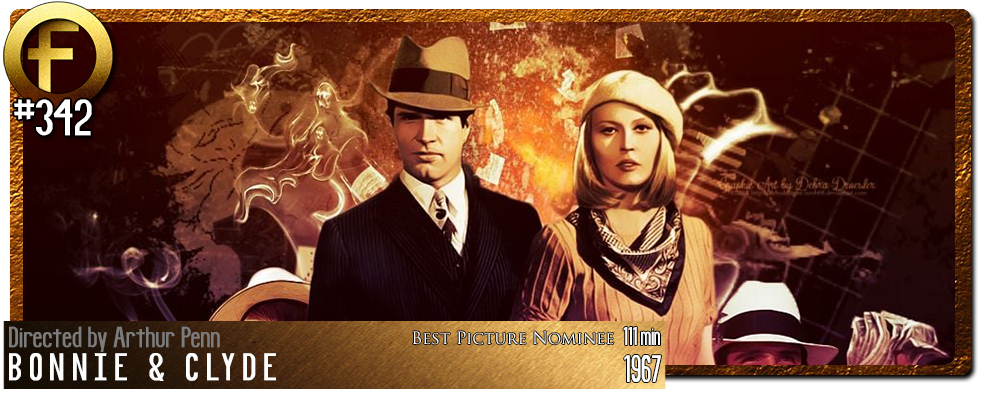Movie Review – Bonnie & Clyde
Principal Cast : Warren Beatty, Faye Dunaway, Gene Hackman, Estelle Parsons, Michael J Pollard, Denver Pyle, Gene Wilder, Evans Evans.
Synopsis: A young couple embark upon a crime spree through Depression-era America, dodging police and gaining notoriety throughout the country. As their gang grows, they become more desperate to escape the lives they’ve set for themselves, leading to the inevitable bloody showdown.
**************
While today this film will seem somewhat dated with its glorification of violence and sexuality, you have to remember that in the late 60’s, when Bonnie & Clyde was first released, it was one of the most controversial films ever. Bonnie Parker & Clyde Barrow were a young couple on the run through depression-era America, robbing banks and killing folks, joined later in their career by Clyde’s brother Buck and his wife, and WD Jones, who was a young small-time hood known to police and a childhood friend of Barrow. Together they cut a swathe through small-town USA, causing plenty of headaches for the police, federal agents and Bank tellers everywhere. While their fame as a crime gang grew, the target on their backs was always growing in sympathy, until both Bonnie and Clyde were gunned down by a posse on a small country road in Louisiana. Chief among their pursuers was one-time Texas Ranger Frank Hamer, who eventually tracked down Barrow and killed the duo as they paused to assist one of their family. Read the Wiki page on their story here.
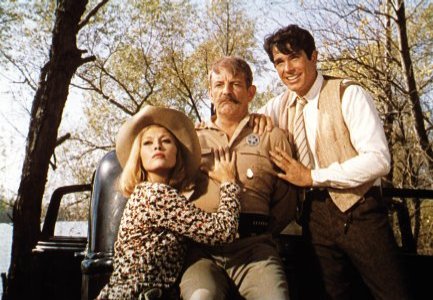
Late director Arthur Penn delivered a confronting, sexualised look at crime in the sepia toned Depression that had settled over the United States in the early part of the 20th century. According to legend, the film was among the first to use squibs for gunshot effects, as well as the provocative sexual overtones throughout the film. Clyde Barrow’s impotence is also highlighted (perhaps it didn’t need to be so forefront of the screenplay…) as is Bonnie’s overt sexuality; this alone was controversial enough at the time, let alone the graphic violence on display.
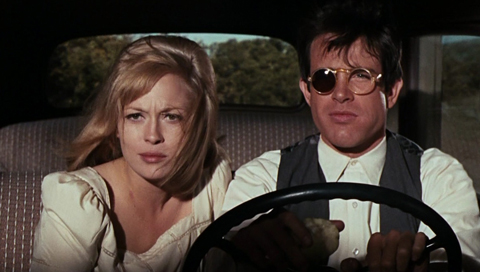
After being released from prison, Clyde Barrow (Warren Beatty) meets young Bonnie Parker (Faye Dunaway), a disillusioned young waitress looking for escape and adventure: she finds it with Clyde when he tells her he “robs banks”. Together, they take off across the country, doing just that. Their gang grows, including Clyde’s brother Buck (Gene Hackman) and his wife (Estelle Parsons), and misfit loner CW Moss (Michael J Pollard); as does their reputation for violence and a carefree disregard for the law. Like many gangsters and cowboys during America’s formative years, the criminal element were often shown to have a complete disdain for the police and Federal agents, often taunting them and making fun of their inability to catch those they pursued. The Barrow Gang skips from hideout to hideout, usually as a result of a police shoot-out, often coming within inches of being killed. As their infamy grows, and their exploits grow more and more daring, the full force of the law is brought to bear on the outlaw gang, which leads inevitably to a final showdown involving blood and bullets.
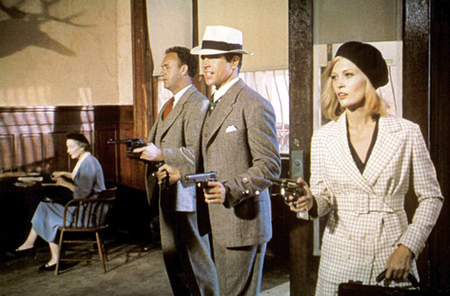
Raw and gritty, Bonnie & Clyde is less a film interesting for its subject matter and more for how it depicts such – the violence and sexuality hadn’t been seen in such a provocative way on screen before. Bonnie tantalisingly strokes the barrel of a gun (somewhat euphemistically) while pouting at Clyde; Clyde’s impotence and inability to sleep with Bonnie causes much of his frustrated rage, which provokes his criminal activity. It’s a self-fulfilling circle, because he can’t break the cycle. Warren Beatty, an actor I’ve been a little ambivalent about during my career watching films, is pretty damn good here, his square-jawed charm and unbridled machismo searing across the screen. Faye Dunaway, while not the most glamorously beautiful woman ever born (just my opinion, don’t hate me folks!) is more sultry than sexy in this film, her overt desire to bed Claude and her depression when he can’t satisfy her sexually the key element to her character. Both Beatty and Dunaway have a chemistry together, a chemistry which makes their inevitable end all the more poignant, and director Penn is canny enough to recognise it and use it to the maximum. Co star Gene Hackman, as Buck, feels almost redundant as a character: he’s your typical loudmouth, brash wild-eyed type, who married for lust rather than love and isn’t happy unless he’s out shooting up the shit. Hackman plays it well, but the character isn’t that interesting, and comes off more as a foil for Beatty than anything else. Michael Pollard, as composite character CW Moss, does a great job as the gang’s “wheel man”, and provides much of the films more humorous moments.
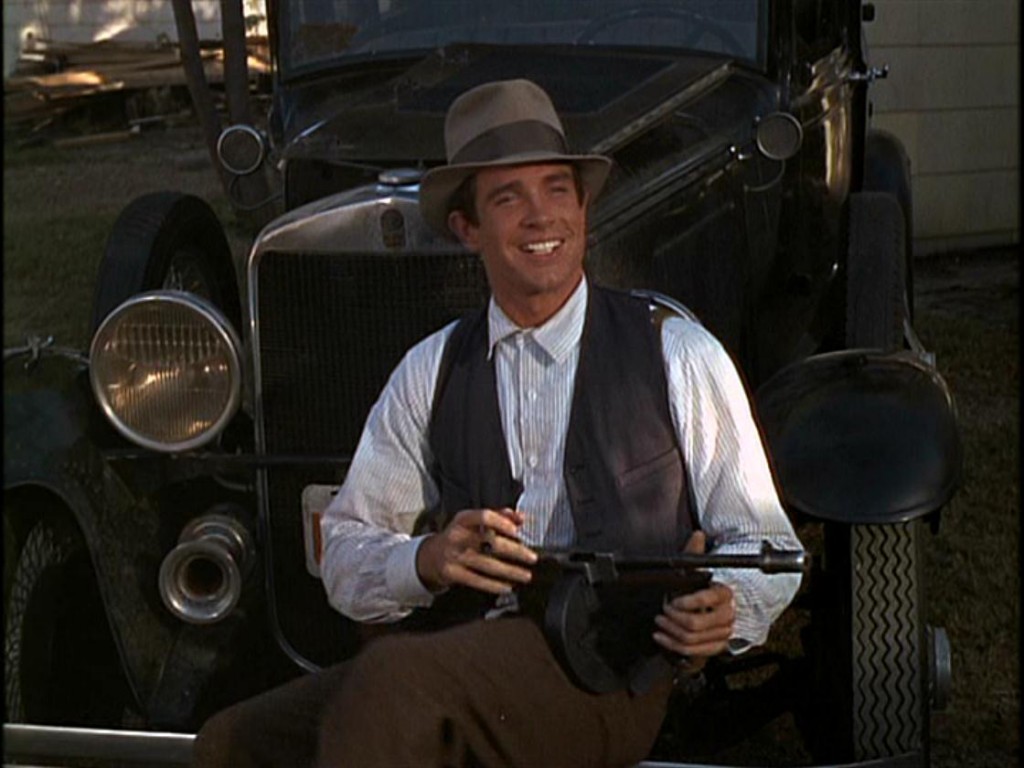
Where the film falls flat, and where I believe the creative direction fails somewhat, is in the casting and direction given to eventual Oscar winner Estelle Parsons, as Bucks wife, Blanche. Her screechy, one-note portrayal of a woman caught in something she didn’t want seems at odds with the more happy-go-lucky nature of the film as a whole, and while I can’t fault her for doing what she was directed to do, I’d be hard pressed to agree with the Academy on that score. In my opinion, it’s this character (not the actress) that brings the film down somewhat. Various sources online state that the real Blanche Barrow was horrified with her portrayal on-screen, and it’s easy to see why.
As to the violence on screen, by todays standards it’s pretty tame, but still quite confronting when it happens. Blood spurts and sprays across the screen as the many shoot-outs and gun battles take place; it’s actually amazing that more people weren’t killed with the sheer quantity of ammunition used in this story. Penn’s camera doesn’t shy away from the blood, nor does it wallow in the violence in a pornographic way – the frame doesn’t deviate from the violence and it’s consequences, yet remains somewhat alienated from its power. Indeed, a lot of the films critical final act is quite passionless, almost aloof in nature as the law catches up with Bonnie & Clyde. Moss’s father, one of the key figures in the Barrow Gang’s downfall (apparently), played by Dub Taylor with angry disappointment, is the most emotional character in the whole film, and he’s only in it for fifteen minutes! Also, it’s worth noting this film featured the debut of Gene Wilder, as one of Bonnie & Clyde’s hostages.
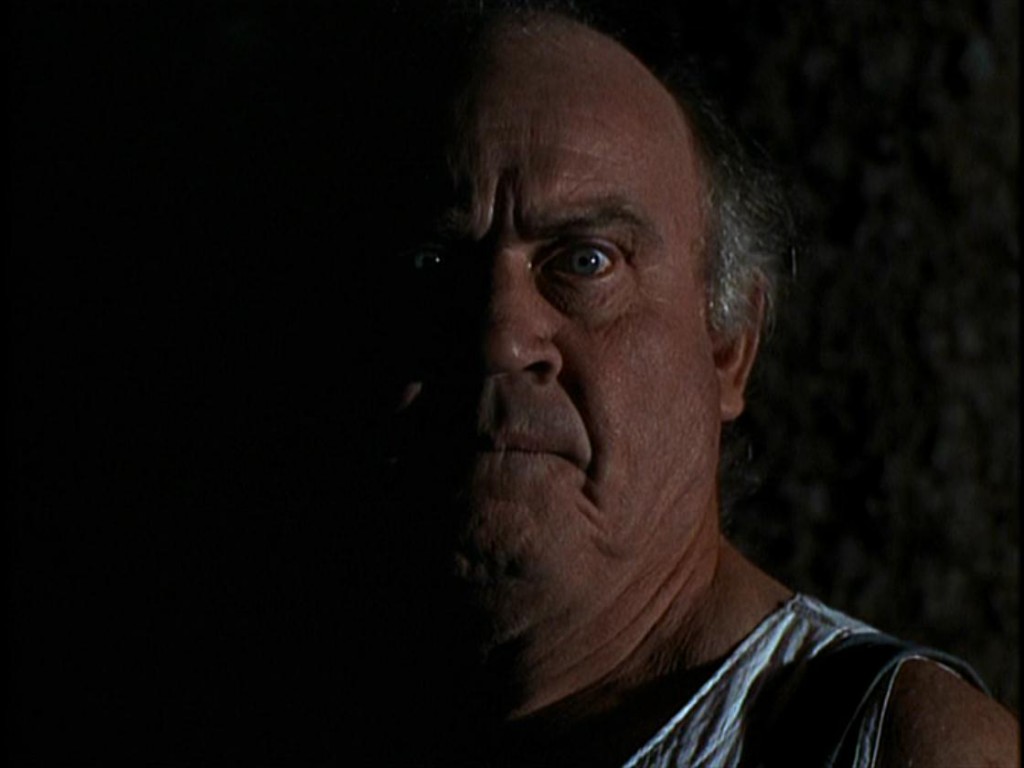
Subtextually, the film is filled to the brim with angry depressive isolationism: the breakdown of law and order and a revulsion towards The Man. Clyde represents the angry, fractured psyche of American men, a sexually frustrated and impotent individual unable to affect change other than to kill, wound or maim others. Bonnie, the liberated yet still frustrated American woman, who wants thrills and danger. Yet neither of these people are actually likeable: they’re naive in their belief that consequences aren’t important, perhaps representative of the counter culture movement growing in the US at the time. In fact, there’s a lot of frustration in this film: almost all the character have social and/or personal issues to overcome that leads to an angry response when denied adequate recompense. There’s a disenchantment with society as a whole, a depression-era anger bubbling away under the surface, that’s redolent in its vitality.
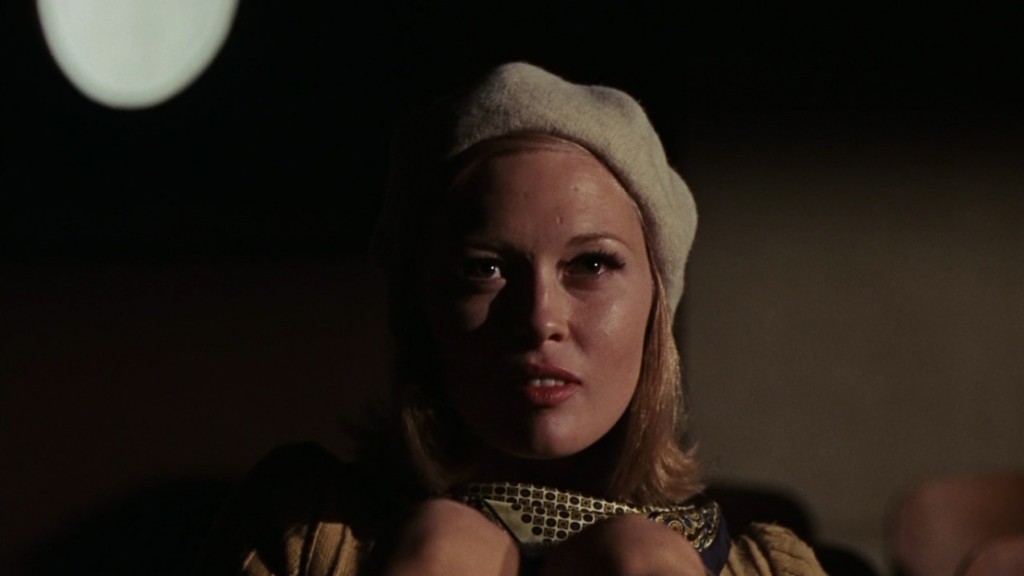
Bonnie & Clyde is a film that deserves its classic status. From the humble, almost embarrassed beginning, with Clyde wooing Bonnie by robbing a bank, to the bullet strewn bodies cut down by the posse sent to kill them (capturing was no longer considered acceptable), and the almost perfunctory ending, this film ticks all the boxes to achieve a memorable, lasting impression. There’s some problematic scripting, and the editing can feel a little choppy at times, but overall Bonnie & Clyde remains as riveting a film now as it did upon release.

